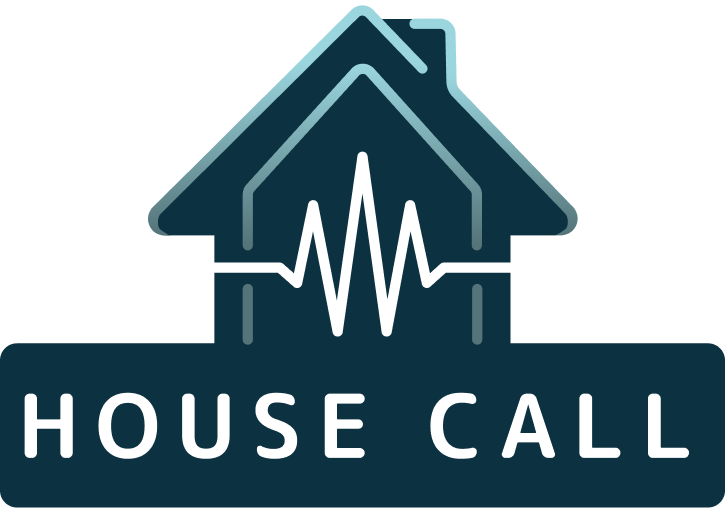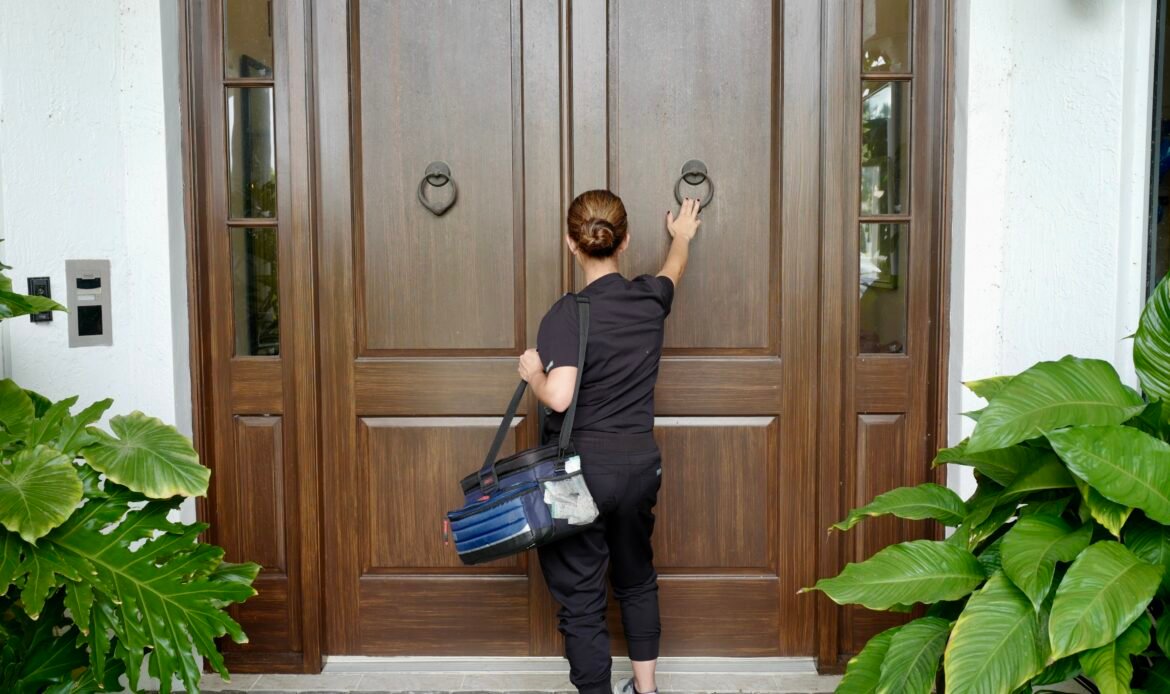Remember when you had to sit in a crowded waiting room flipping through outdated magazines, wondering how much longer you’d have to wait? Those days are fading fast. Healthcare is stepping into the 21st century, and spoiler alert: it’s showing up at your front door in the form of in-home nurse visits.
In-home visits are the new wave of patient care, bringing nurses and other providers directly to you. Platforms like House Call The App are making this process seamless and stress-free. Imagine scheduling a nurse visit with the same ease as ordering takeout—except this “delivery” is for your health, not your hunger.
Let’s explore why this personalized approach is more than just a trend; it’s the future of how we care for ourselves and our loved ones.
The Rise of Personalized Healthcare
For years, healthcare followed a strict “doctor knows best” model, where the provider called all the shots, and patients had little say. While medical expertise is still crucial (let’s not hand the scalpel to amateurs), today’s approach focuses on something powerful: collaboration.
Modern healthcare is a team effort where your provider works with you to create a plan that fits your unique needs and lifestyle. It’s less about being told what to do and more about having a seat at the table—or maybe on your couch during an in-home nurse visit. This collaboration fosters trust and makes it more likely you’ll follow through on your care plan.
In-home healthcare caters perfectly to this dynamic. It offers the flexibility to accommodate your busy life while creating an environment where your “buy-in” matters. Providers and patients work together to ensure the care aligns with medical needs and personal preferences.
Key Benefits of In-Home Health Services
Enhanced Convenience
Let’s start with the obvious: convenience is king. Whether you’re juggling back-to-back Zoom meetings or wrangling toddlers who think bedtime is optional, carving out time to drive to a clinic can feel impossible. In-home health visits eliminate that hassle entirely.
Your provider comes to you—no commute, no crowded waiting rooms, and no having to explain why you’re 10 minutes late (again). It’s healthcare designed to fit your life, not the other way around.
Improved Personal Comfort
Picture this: instead of sitting under fluorescent lights in a sterile exam room, you’re relaxing in your favorite chair at home. Maybe your dog is curled up next to you, or your favorite playlist is playing softly in the background. Sounds better, right?
In-home nurse visits prioritize comfort, creating an environment where you can feel at ease. And when people feel less stressed, it often leads to better outcomes. It’s not just about convenience; it’s about creating a space where healing can happen naturally.
Greater Accessibility
Healthcare shouldn’t depend on your zip code, but for many people, it does. If you live in a rural area or in a place where the nearest clinic is an hour away, getting care can be a challenge. That’s where in-home health visits shine. In-home nurse services like House Call bring care directly to you, breaking down barriers that often leave patients underserved.
Cost-Effectiveness of At-Home Nurse Services
In-home care isn’t just convenient; it’s often more affordable than traditional healthcare settings. For starters, it can cut out some of the big-ticket expenses like costly ER visits and hospital stays. Patients often see lower out-of-pocket costs, and insurers are catching on to the cost savings too, offering coverage for in-home services more frequently. By catching health issues early or managing chronic conditions proactively, in-home visits save money and improve long-term health outcomes—a win for everyone.
Technology’s Role in Facilitating In-Home Healthcare
Technology has officially entered its “healthcare hero” era. Without apps, telemedicine platforms, and mobile devices, in-home healthcare wouldn’t be nearly as seamless as it is today.
Telemedicine also plays a big supporting role, allowing providers to monitor your health remotely or troubleshoot minor issues without requiring a physical visit. Together, these technologies ensure care is both accessible and efficient.
Addressing Healthcare Disparities
Healthcare disparities are a major issue. For many, navigating factors like location, transportation challenges, or financial constraints can make accessing quality care feel like carrying weights up a steep hill. But in-home healthcare is changing that narrative.
And let’s not forget the trust factor. For those who feel overlooked in traditional settings, this model also fosters trust through personalized, one-on-one care. It’s healthcare that meets people where they are—both physically and emotionally.
Specialized Nursing Services Offered in In-Home Care
In-home care isn’t one-size-fits-all—it’s more like a menu of options tailored to what you need:
- Chronic Illness Management: Managing conditions like diabetes or hypertension can be overwhelming, but in-home services make it easier to stay on track with regular monitoring and support.
- Post-Operative Care: Recovering from surgery? Skip the stressful clinic visits and let a professional check your incision from the comfort of your own bed.
- Regular Wellness Check-Ups: Preventative care is key. In-home wellness visits help keep your health on point without disrupting your day.
This range of services means you get the care you need, when and where you need it—without the “hurry up and wait” of a traditional office visit.
Enhanced Focus on Preventative Care
You know the saying: an ounce of prevention is worth a pound of cure. In-home healthcare takes that idea and runs with it, focusing heavily on preventative care to help patients stay ahead of potential health issues.
Routine health monitoring, like blood pressure checks or lab work, becomes infinitely easier when it happens at home. No more skipping appointments because you’re “too busy” (we’ve all been there).
By making preventative care more accessible and less stressful, in-home services help patients stay proactive about their health without turning their lives upside down.
Challenges and Solutions for In-Home Nurse Services
In-home healthcare isn’t without its challenges—like navigating regulations and ensuring provider availability. However, innovations like House Call The App simplify logistics, while telemedicine fills gaps in care.
As awareness grows, insurance companies and policymakers are working to expand support for in-home services, making them more accessible and sustainable for the future.
Case Studies and Success Stories
Example: Meet Sarah, a busy professional living with type 1 diabetes. Between her demanding job and her toddler’s endless energy, traditional clinic visits weren’t just inconvenient—they were nearly impossible.
With in-home care, Sarah gets the support she needs without disrupting her routine. A nurse visits biweekly to monitor her blood sugar levels, adjust her insulin plan as needed, and provide nutritional advice tailored to her hectic lifestyle. This proactive, hands-on approach not only keeps Sarah’s condition under control but also empowers her to manage her health with confidence.
This personalized care not only keeps Sarah’s condition under control but also empowers her to manage her health with confidence—all without leaving home.
The Future of In-Home Healthcare
In-home healthcare isn’t just a passing trend—it’s shaping up to be the next frontier of patient care. As technology continues to advance, we’re likely to see even more innovative solutions that make healthcare delivery faster, easier, and more efficient.
Wearable devices provide real-time health data to providers allowing them to offer more precise, data-driven care. AI-powered platforms will enhance diagnostics and streamline communication. Meanwhile, as telemedicine and in-home visits continue to complement each other, healthcare systems will become more adaptable and patient-centric.
The ultimate goal? A healthcare system that revolves around the patient, offering high quality, personalized, accessible care that meets individual needs.
How House Call The App Is Revolutionizing In-Home Healthcare
House Call The App connects patients to top-tier providers with just a few taps. Through its intuitive platform, House Call lets users browse providers, book appointments, and customize care to fit their needs. From routine care to chronic illness management, the app simplifies the process, ensuring patients get professional, personalized care when and where they need it.
As it moves beyond its pilot phase, House Call is poised to reshape how healthcare is delivered, making it more accessible for everyone.
Tips for Patients Considering In-Home Nurse Services
- Prepare Your Space: Create a clean, well-lit area for care.
- Be Open: Share your full medical history and concerns.
- Ask Questions: Clarify doubts or get advice as needed.
- Follow Up: Stick to recommendations and schedule future visits.
In-home healthcare is designed to fit your needs, so a little preparation ensures the best experience.
In-home healthcare is more than a convenience—it’s a game-changer for modern wellness. By focusing on patient-centered care, leveraging technology, and addressing disparities, it’s setting a new standard for how care is delivered.
Platforms like House Call The App are leading this movement, proving healthcare doesn’t have to be a hassle. Whether managing diabetes, staying on top of routine labs, or simply seeking a better way to prioritize wellness, in-home care offers a future that’s empowering, accessible, and uniquely tailored to each patient’s needs.
In-Home Nurse Services FAQs
- What types of healthcare services can be provided at home?
Services range from routine check-ups and chronic illness management to post-operative care and preventative screenings. - How does technology support in-home healthcare delivery?
Apps like House Call streamline scheduling and connect patients with providers, while telemedicine offers remote consultation. - Are in-home health visits more expensive than traditional care?
Not necessarily. In many cases, in-home visits can reduce costs by avoiding ER visits and hospital stays. - How does House Call The App ensure the quality of its healthcare providers?
Providers are thoroughly vetted to meet professional standards and expertise. - What is the future outlook for in-home healthcare services?
The future includes enhanced wearable technology, AI-driven diagnostics, and expanded services that bring even more convenience and precision to in-home care.

 Login
Login
2 replies on “Why In-Home Nurse Services Are the Future of Healthcare”
[…] Choosing in-home healthcare is about more than just convenience—it’s about making informed decisions that fit your lifestyle, personal preferences and health needs. Whether you need rehabilitation services, routine monitoring, or chronic illness management, having access to a network of skilled professionals brings peace of mind and a higher quality of care. […]
[…] waiting in crowded rooms, or rearranging their schedules around long hospital visits. With at-home care, nurses come to you—on your […]